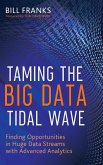A concise framework on how financial institutions can improve their risk assessment systems
The subprime crisis in the United States has prompted companies worldwide to improve their lending systems. Credit Risk Assessment: The New Lending System for Borrowers, Lenders, and Investors provides a comprehensive credit assessment framework to show how to classify credit risk in an effective, transparent, and forward-looking manner in order to advance the current system and prevent future financial disruptions. Discussion is included on how this new framework can embrace all relevant factors and business contexts to adequately evaluate and balance risk to lenders and investors and affordability for borrowers.
Clark Abrahams (Cary, NC) is Chief Financial Architect at SAS, where he leads business and product development. Mingyuan Zhang (Cary, NC) is a solution architect for SAS Financial Services.
Existing credit risk assessment methods have put too much of an emphasis on past loan performance and historical market conditions and not enough on borrower capacity, new mortgage product risk characteristics, and economic cycles. According to industry practitioners Clark Abrahams and Mingyuan Zhang, the housing market bubble boom and burst and the subsequent financial crisis could have been prevented had these underwriting gaps been properly addressed.
Credit Risk Assessment: The New Lending System for Borrowers, Lenders, and Investors equips you with an effective comprehensive credit assessment framework (CCAF) that can provide early warning of risk, thanks to its forward-looking analyses that do not rely on the premise that the past determines the future. Revealing how an existing credit underwriting system can be extended to embrace all relevant factors and business contexts in order to accurately classify credit risk and drive all transactions in a transparent manner, Credit Risk Assessment clearly lays out the facts.
This well-timed book explores how your company can improve its current credit assessment system to balance risk and return and prevent future financial disruptions. Describing how a new and comprehensive lending framework can achieve more complete and accurate credit risk assessment while improving loan transparency, affordability, and performance, Credit Risk Assess-ment addresses:
How a CCAF connects borrowers, lenders, and investors-with greater transparency
The current financial crisis and its implications
The root cause to weaknesses in loan underwriting practices and lending systems
The main drivers that undermine borrowers, lenders, and investors
Why a new generation of lending systems is needed
Market requirements and how a comprehensive risk assessment framework can meet them
The notion of an underwriting gap and how it affects the lenders' underwriting practices
Typical issues associated with credit scoring models
How improper use of credit scoring in under-writing underestimates the borrower's credit risk
The ways in which the current lending system fails to address loan affordability
How mortgage and capital market financial innovation relates to the crisis
Whether you are a borrower, a lender, or an investor, Credit Risk Assessment enables you to better understand the weaknesses in today's loan underwriting and to better cope with financial weaknesses toward fostering a new generation of credit models that possess greater transparency.
The subprime crisis in the United States has prompted companies worldwide to improve their lending systems. Credit Risk Assessment: The New Lending System for Borrowers, Lenders, and Investors provides a comprehensive credit assessment framework to show how to classify credit risk in an effective, transparent, and forward-looking manner in order to advance the current system and prevent future financial disruptions. Discussion is included on how this new framework can embrace all relevant factors and business contexts to adequately evaluate and balance risk to lenders and investors and affordability for borrowers.
Clark Abrahams (Cary, NC) is Chief Financial Architect at SAS, where he leads business and product development. Mingyuan Zhang (Cary, NC) is a solution architect for SAS Financial Services.
Existing credit risk assessment methods have put too much of an emphasis on past loan performance and historical market conditions and not enough on borrower capacity, new mortgage product risk characteristics, and economic cycles. According to industry practitioners Clark Abrahams and Mingyuan Zhang, the housing market bubble boom and burst and the subsequent financial crisis could have been prevented had these underwriting gaps been properly addressed.
Credit Risk Assessment: The New Lending System for Borrowers, Lenders, and Investors equips you with an effective comprehensive credit assessment framework (CCAF) that can provide early warning of risk, thanks to its forward-looking analyses that do not rely on the premise that the past determines the future. Revealing how an existing credit underwriting system can be extended to embrace all relevant factors and business contexts in order to accurately classify credit risk and drive all transactions in a transparent manner, Credit Risk Assessment clearly lays out the facts.
This well-timed book explores how your company can improve its current credit assessment system to balance risk and return and prevent future financial disruptions. Describing how a new and comprehensive lending framework can achieve more complete and accurate credit risk assessment while improving loan transparency, affordability, and performance, Credit Risk Assess-ment addresses:
How a CCAF connects borrowers, lenders, and investors-with greater transparency
The current financial crisis and its implications
The root cause to weaknesses in loan underwriting practices and lending systems
The main drivers that undermine borrowers, lenders, and investors
Why a new generation of lending systems is needed
Market requirements and how a comprehensive risk assessment framework can meet them
The notion of an underwriting gap and how it affects the lenders' underwriting practices
Typical issues associated with credit scoring models
How improper use of credit scoring in under-writing underestimates the borrower's credit risk
The ways in which the current lending system fails to address loan affordability
How mortgage and capital market financial innovation relates to the crisis
Whether you are a borrower, a lender, or an investor, Credit Risk Assessment enables you to better understand the weaknesses in today's loan underwriting and to better cope with financial weaknesses toward fostering a new generation of credit models that possess greater transparency.








